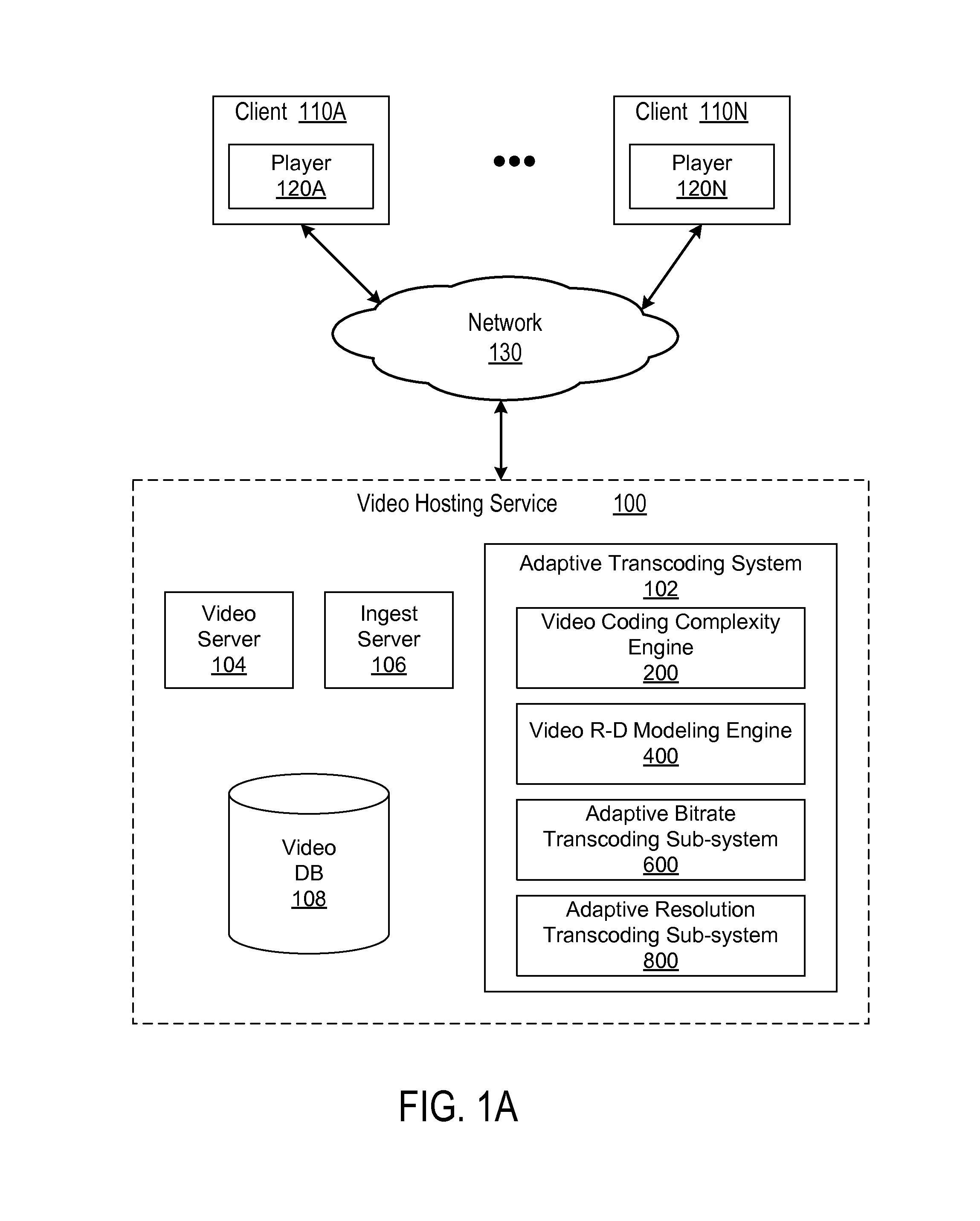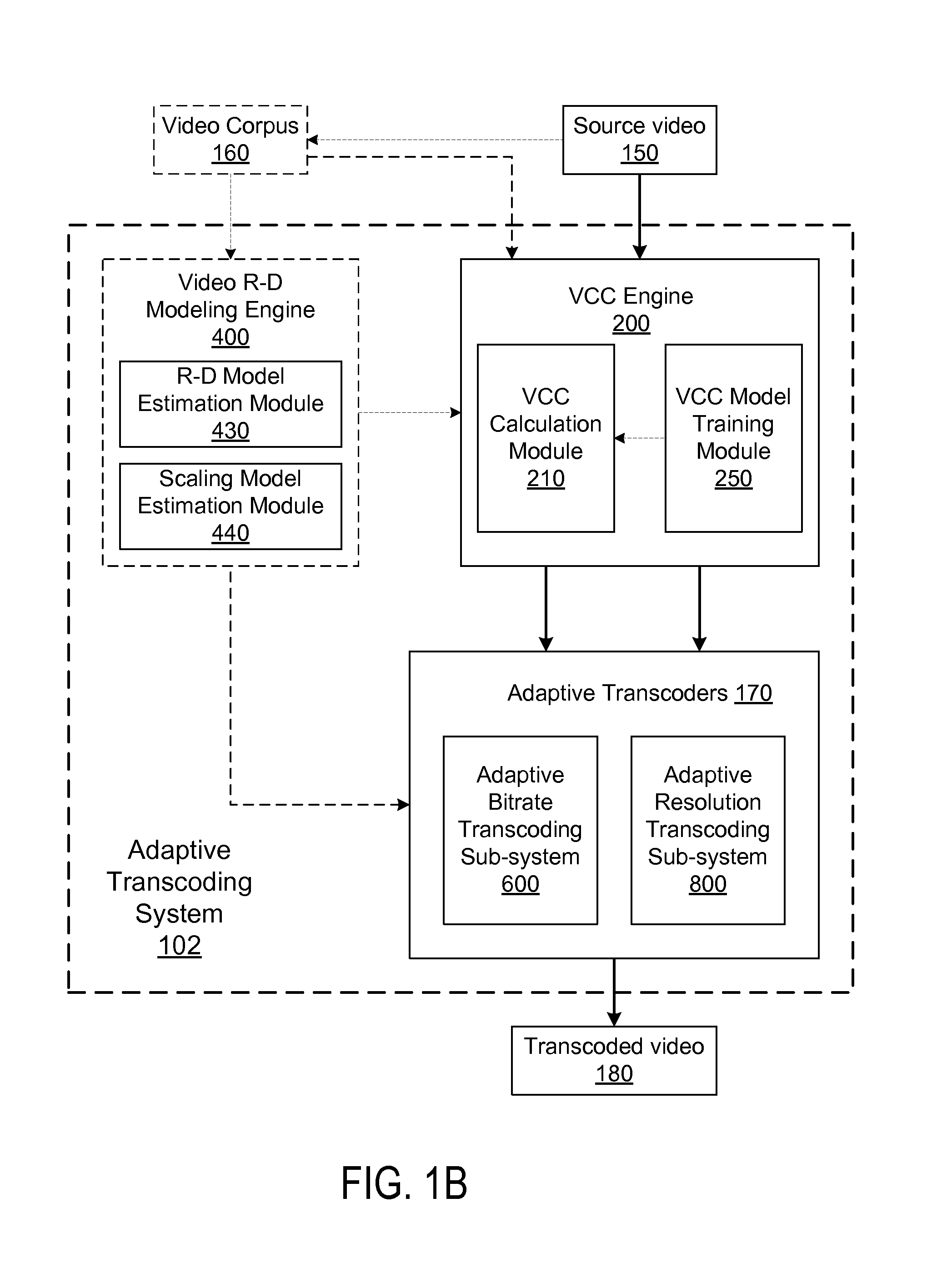Content-based adaptive video transcoding framework
a video transcoding and content technology, applied in the field of video hosting systems, can solve the problems of coding each video with the same target resolution and video frame rate, reducing the bandwidth of color television, and optimizing the allocation of coding bits among different videos, so as to achieve the effect of optimizing resolution and visual quality
- Summary
- Abstract
- Description
- Claims
- Application Information
AI Technical Summary
Benefits of technology
Problems solved by technology
Method used
Image
Examples
Embodiment Construction
I. System Overview
[0032]FIG. 1A is a block diagram illustrating a system view of a video hosting service 100 having an adaptive transcoding system 102 based on video coding complexity measurement. Multiple users / viewers use client 110A-N to send video hosting requests to the video hosting service 100, such as uploading videos to a video hosting website, and receive the requested services from the video hosting service 100. The video hosting service 100 communicates with one or more clients 110A-N via a network 130. The video hosting service 100 receives the video hosting service requests from clients 110A-N, transcodes source videos by the adaptive transcoding system 102 and returns the transcoded source videos to the clients 110A-N.
[0033]Turning to the individual entities illustrated on FIG. 1A, each client 110 is used by a user to request video hosting services. For example, a user uses a client 110 to send a request for uploading a video for sharing, or playing a video. The clien...
PUM
 Login to View More
Login to View More Abstract
Description
Claims
Application Information
 Login to View More
Login to View More - R&D
- Intellectual Property
- Life Sciences
- Materials
- Tech Scout
- Unparalleled Data Quality
- Higher Quality Content
- 60% Fewer Hallucinations
Browse by: Latest US Patents, China's latest patents, Technical Efficacy Thesaurus, Application Domain, Technology Topic, Popular Technical Reports.
© 2025 PatSnap. All rights reserved.Legal|Privacy policy|Modern Slavery Act Transparency Statement|Sitemap|About US| Contact US: help@patsnap.com



